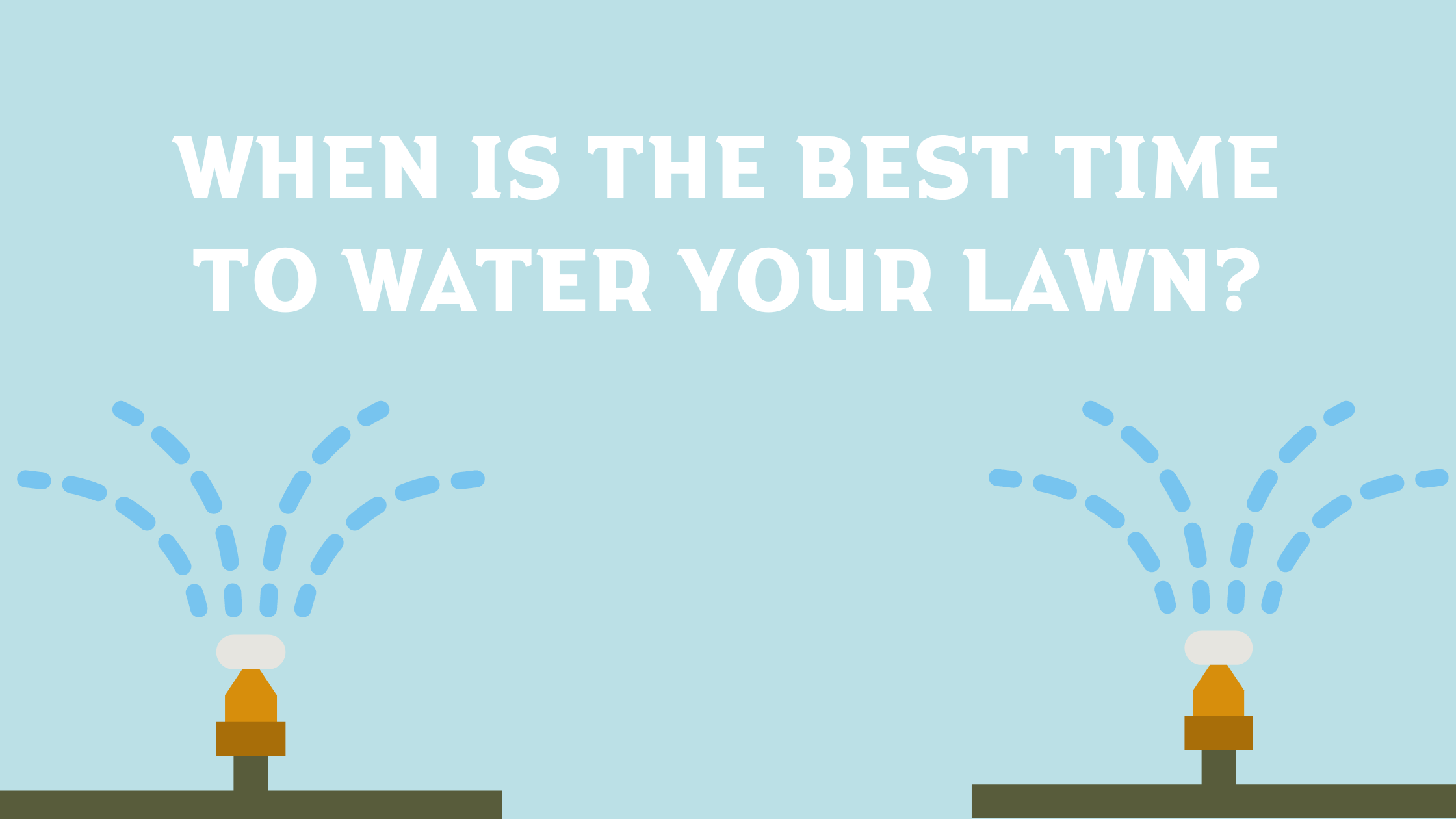When is the Best Time to Water Your Lawn?

Understanding some of the foundational strategies for watering your lawn is crucial for maintaining a healthy and beautiful turf. The following guidelines serve as a starting point for understanding when the best time to water your lawn is, including frequency, timing, duration, weather considerations and water retention. While the following information is a helpful guideline, all lawns are unique and have different influences that will affect our recommendations. If you need help with your watering practices, start with what we have outlined here and then adjust accordingly. By implementing these strategies thoughtfully, homeowners can nurture their lawns effectively while contributing to sustainable water usage practices.
Frequency:
We advocate for the practice of deep watering. Deep watering allows your soil to dry out between watering cycles, prompting your lawn’s roots to delve deeper in search of nutrients and moisture. This process fosters a robust root system and promotes the overall health and strength of your turf. Deep watering happens when you water every other day, which if you follow the City of Bozeman’s watering guidelines you would already have this practice put in place.
Timing:
The best time to water your lawn is in the morning, ideally between 5 am and 8 am. During this period, the temperature is still cool enough to minimize water loss through evaporation. Additionally, the weather is typically calm, reducing the risk of water being carried away by wind. Morning watering allows the lawn to dry as the day warms up, mitigating the risk of fungal diseases like leaf spot or mushrooms. Starting your sprinklers around May 1st, even with expected rainfall, can help protect your lawn against diseases and drought during the summer months.
Duration:
Your lawn requires approximately 1½” of water per week, typically beginning around May 1st. A general guideline is to run each zone for 30 minutes. This should equate to .5” of water every other day when doing deep watering. If you’re unsure whether that is happening or not, ask your Yard Guard technician or send a note to our office that you would like a Yard Guard measuring cup. Placing this cup in various lawn zones can verify water distribution. Alternatively, a small tuna can may serve as a makeshift measuring device. Adjusting sprinkler times based on individual needs can optimize water distribution and avoid overwatering or underwatering certain areas.
Weather Considerations:
When considering weather conditions, the primary focus should be on ensuring your lawn receives the required 1½” of water per week. Coordinating watering schedules with rainfall can be beneficial, provided the lawn receives the right amount of moisture.
Water Retention:
Given escalating concerns about water retention, it’s crucial to water your lawn as efficiently as possible. Beginning early in the season is advisable to avoid trying to compensate for water deficits once temperatures rise. One trick we recommend is turning your sprinklers on early in the year and monitoring the rain. When it rains the equivalent of ½”, you can skip the next watering! Maintaining a consistent supply of organic material is essential for soil health, as organic-rich soil can retain more water and reduce compaction, facilitating proper water absorption. This is one of the main tactics in our Blended Organic Program.
In response to water retention efforts, we had planned to test a water-saving product this year on our test plots in Beall Park. However, due to the anticipated high drought conditions, we will be offering this service to our clients starting in 2024. Although the products claim you can reduce watering up to 50%, industry standards fall more in the 20-25% range. Many of our industry friends have reported positive results with this product, and ongoing tests will provide more precise retention data. For more information about this product, click this link.
We hope this information provides a helpful jumping off point for nurturing your lawn. If any of these points brings more questions to the forefront, give us a call and we’d be happy to talk through this with you. Remember that it’s not a one size fits all plan. It’s important to start somewhere and adjust accordingly to your properties preferences! Your lawn is a living, breathing thing and will have its own particular desires!
 Billpay
Billpay
